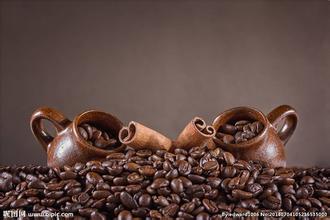The steps of hand dripping filter cup introduction to the taste of coffee by flavor description
The steps of hand dripping filter cup introduction to the taste of coffee by flavor description
From the above introduction, we can actually see that the most common materials of coffee filter cups are plastic, ceramic and copper. Each has its own characteristics, depending on personal preferences and willingness to invest in the economy. It is worth noting that copper products are likely to rust, so it is best to wipe clean moisture every time you use it, and then keep it in a ventilated place. In addition to the above three most commonly used materials, there are heat-resistant glass, aluminum alloy, tin, stainless steel and other materials, and even in some hot countries in Southeast Asia, there are pure natural and environmentally friendly coffee filter cups woven with plants such as bamboo and Zongma. In fact, as long as the coffee filter cup can meet the three basic conditions of filtration, ventilation and heat preservation, it can make a good coffee metal filter: the advantage is that the metal will not filter out the coffee oil, so it is easy to retain the original taste of coffee; the disadvantage is that it is not easy to filter out coffee grounds, artificial controllability and playability are weaker than other kinds. The brands available on the market are Swissgold of Switzerland and Tiamo of Taiwan. Vietnam filter cup is very popular because of its high quality and low price. When France entered Vietnam, it also brought coffee into Vietnam. The Vietnamese filter cup is a replica of the earliest Melitte copper filter cup. If you compare the Vietnamese filter cup with the world's first copper filter cup invented by Mrs. Melita, you will find that except for the different materials, they are almost the same in shape and structure, and the early Melitte porous filter cup is almost exactly the same as the current Vietnamese dripping pot. So, if you want to try what the early Melitte filter cup tasted like, you should deserve a Vietnam Didi Cup. The characteristic coffee made with condensed milk and cinnamon powder is worth trying. I feel that Vietnamese coffee is like love: if you love it, you will love it; if you don't love it, you will go away and never make do with it.
Big hole filter cup: as the name implies, it is single and big hole. It is characterized by fast flow rate, so its popularity is relatively high. The disadvantage is that because the flow rate is too fast, it is easy to cause insufficient extraction, so the requirement of water injection speed is relatively high. Well-known brands include Japanese Hario V60s and Kono. It is said that when discussing the V60 market strategy, HARIO finally decided: not to take the aristocratic high-end route, the choice of a variety of materials and reasonable prices make it successfully promote to the global coffee market, especially to the families of tens of millions of people. Large-hole filter cups are very popular in the United States, but few people use them in Japanese cafes. So some boutique cafes don't recommend it.

Important Notice :
前街咖啡 FrontStreet Coffee has moved to new addredd:
FrontStreet Coffee Address: 315,Donghua East Road,GuangZhou
Tel:020 38364473
- Prev

Pacamara Coffee Bean Flavor description Grinding scale Variety treatment method taste Manor
Pacamara Coffee Flavor description Grinding scale Variety treatment Manor Salvadoran Coffee ranks alongside Mexico and Guatemala as the producer of Asa and Merdo, and is fighting for the top one or two in China and the United States with other countries. The highlands of origin are large coffee beans of all sizes, which are fragrant and mild in taste. Like Guatemala and Costa Rica, coffee from El Salvador
- Next

Porbat coffee bean roaster flue gas treatment-baking degree
Porbat coffee bean roaster smoke treatment-roasting degree there has been a craze for roasting coffee beans in small quantities in recent years, and there are many household roasters on the market, making it quite easy to roast coffee beans yourself. At present, household roasters can be divided into three types: self-ignition type, hot air type and drum type. Although, these are not very sophisticated professional models, but as long as they are operated properly,
Related
- What brand of black coffee is the most authentic and delicious? what are the characteristics of the flavor of the authentic Rose Summer Black Coffee?
- Introduction to the principle and characteristics of the correct use of mocha pot A detailed course of mocha pot brewing coffee is described in five steps.
- Which is better, decaf or regular coffee? how is decaf made?
- How much is a bag of four cat coffee?
- How about four Cat Coffee or Nestle Coffee? why is it a cheap scam?
- Which is better, Yunnan four Cats Coffee or Nestle Coffee? How about cat coffee? is it a fake scam? why is it so cheap?
- How about Cat Coffee? what grade is a hoax? which instant coffee tastes better, four Cat Coffee, Nestle Coffee or G7 coffee?
- Process flow chart of coffee making-Starbucks coffee making process what coffee tastes good at Starbucks
- The top ten best coffee beans in the world Rose summer coffee or Tanzanian coffee tastes good
- Yunnan four cat coffee is good to drink?_four cat coffee is a big brand? four cat blue mountain coffee is fake?

